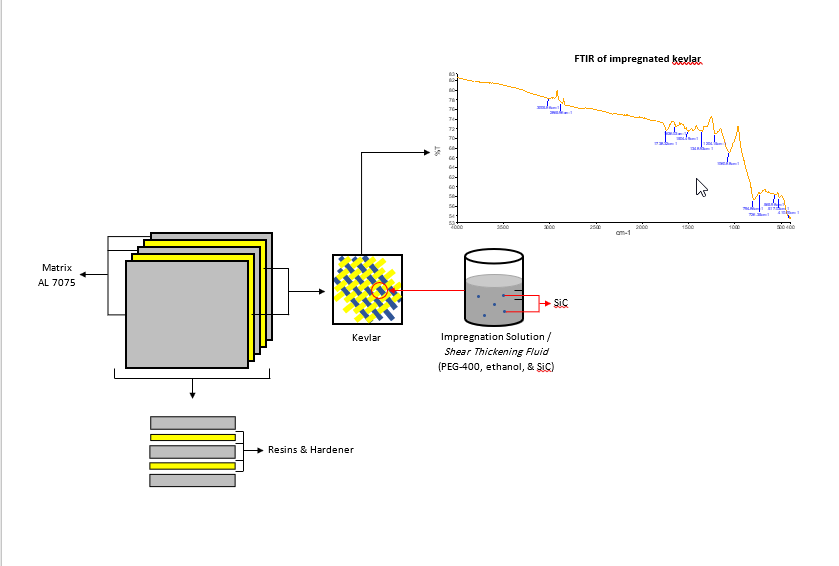Wed, Nov 27, 2024
[Archive]
Volume 20, Issue 1 (March 2023)
IJMSE 2023, 20(1): 1-9 |
Back to browse issues page
Download citation:
BibTeX | RIS | EndNote | Medlars | ProCite | Reference Manager | RefWorks
Send citation to:



BibTeX | RIS | EndNote | Medlars | ProCite | Reference Manager | RefWorks
Send citation to:
Maharani G C, Syahrial A Z. The Effect of The Number of Kevlar Layers Impregnated Nano SiC on Ballistic Resistance of Hybrid Laminated Al7075 Composites as Lightweight Material. IJMSE 2023; 20 (1) :1-9
URL: http://ijmse.iust.ac.ir/article-1-2910-en.html
URL: http://ijmse.iust.ac.ir/article-1-2910-en.html
Abstract: (9152 Views)
Materials that are applied to combat vehicles require an innovation as the development of the military world advances. The material innovation in this research is a lightweight hybrid laminated Al7075 composites. The main materials used in this research are aluminum 7075 plate, kevlar 29, silicon carbide (SiC) nano powder, and epoxy resin. SiC nano powder is mixed with polyethylene glycol-400 (PEG-400), then ethanol is added so that it becomes a shear thickening fluid (STF) solution which is used to impregnate kevlar. Laminate composites were prepared using the hand lay-up method with epoxy resin as an additive between layers of kevlar and aluminum 7075 plates. The thickness of laminates is various due to the number of kevlar used different of each laminated that is 8, 16, and 24 layers. The results of this study show that the composite with impregnated kevlar has higher ballistic and impact resistance values than the composite with non-impregnated kevlar, which has good potential as a base material for combat vehicles such as tanks. This is also supported by the Fourier Transfer Infrared Spectrometry (FTIR) results to determine the level of absorbance of the functional groups identified in impregnated kevlar and Scanning Electron Microscopy (SEM) results of the distribution of nano SiC filler that infiltrated to the empty space in the kevlar fiber.
Keywords: Hybrid Laminate Composite, Kevlar, SiC Nano Particles, Ballistic Resistance, Impact Strength
Type of Study: Research Paper |
Subject:
Materials development for 4D printing
Send email to the article author
| Rights and permissions | |
 |
This work is licensed under a Creative Commons Attribution-NonCommercial 4.0 International License. |







